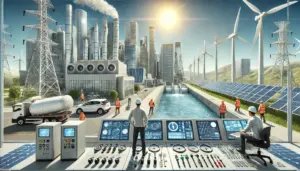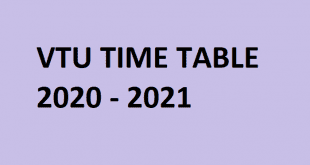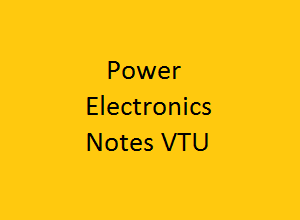Energy Engineering Notes PDF VTU | EE PDF VTU BTech Notes 2025
Here you can download the Energy Engineering Notes VTU PDF Notes | EE Pdf VTU of as per VTU Syllabus. Below we have list all the links as per the modules.
Please find the download links of Energy Engineering Notes VTU PDF Notes | EE Pdf VTU Notes are listed below

Energy Engineering Notes PDF VTU Overview
Energy Engineering is a crucial subject in the VTU B.Tech curriculum, focusing on the efficient use, conversion, and management of energy. These notes provide comprehensive coverage of the syllabus, aiding students in mastering the subject.
Energy Engineering PDF Lecture Notes – VTU
The Energy Engineering PDF lecture notes for VTU are meticulously designed to align with the university’s syllabus. They are an essential resource for students aiming to excel in their exams and understand the practical applications of energy engineering.
Energy Engineering Notes, PDF | EE B Tech (2025)
These notes are tailored for the 2024 B.Tech batch, offering detailed explanations and diagrams for each topic. The structured format helps students grasp complex concepts with ease, making them an invaluable study tool.
Description

Energy Engineering involves the study of energy generation, distribution, and conservation. This field is vital in addressing global energy challenges and developing sustainable solutions. The PDF notes encompass all the fundamental and advanced topics required for a thorough understanding of the subject.
Energy Engineering Notes | PDF, Syllabus, Books | B Tech (2025)
The notes cover the complete syllabus prescribed by VTU, including steam power plants, diesel engine power plants, nuclear energy, solar energy, and more. Additionally, recommended books provide further reading material to enhance understanding.
Overview of EE Notes PDF
The EE notes PDF includes detailed explanations, diagrams, and numerical problems. They are designed to facilitate self-study, with a clear layout and concise content that helps in quick revision and exam preparation.
The Following Topics Are Covered in Energy Engineering Handwritten Notes
- Steam Power Plant: Types of fuels, equipment for coal burning, oil burners, pulverized fuel systems, and steam generation.
- Chimneys: Types of drafts, chimney height calculations, cooling towers, and steam generator accessories.
- Diesel Engine Power Plant: Applications, starting methods, auxiliaries, and layout.
- Hydro Power Plant: Hydrographs, storage plants, penstocks, and general layout.
- Nuclear Energy: Principles of nuclear energy, reactor types, radiation hazards, and waste disposal.
- Solar and Wind Energy: Radiation measurement, solar collectors, wind energy potential, and wind machines.
- Tidal, OTEC, and Geothermal Energy: Mechanics of tidal power, OTEC principles, and geothermal energy conversion.
- Bio-Energy: Photosynthesis, biogas production, and thermochemical conversion.
Links to Download Energy Engineering Notes PDF
Link: Complete Notes
EE VTU Notes | Energy Engineering VTU Notes | VTU EE notes
PART – A
Link: Unit 1 Notes
Link: Unit 2 Notes
Link: Unit 3 Notes
Link: Unit 4 Notes
———————————-
PART – B
Link: Unit 5 Notes
Link: Unit 6 Notes
Link: Unit 7 Notes
Link: Unit 8 Notes
Energy Engineering Notes and Study Material PDF Free Download
These notes are available for free download, providing a cost-effective study solution for students. By offering comprehensive coverage of the syllabus, they serve as a reliable resource for exam preparation.

Energy Engineering Notes PDF from VTU
These notes are curated based on the VTU syllabus, ensuring they are accurate and up-to-date. They provide a solid foundation for students aiming to excel in energy engineering.
Always Choose Smartzworld to Download Energy Engineering Notes PDF
Smartzworld offers a user-friendly platform for downloading notes. It ensures easy access, high-quality content, and a seamless downloading experience, making it a preferred choice for students.
DOWNLOAD NOW
Benefits of FREE EE Handwritten Notes PDF
Handwritten notes offer a personalized touch, making complex topics easier to understand. They are available for free, providing an economical way for students to access high-quality study material.
FAQs
Q1. Where can I download the Energy Engineering Notes Pdf?
You can download the notes from the provided links for each unit or the complete set from Smartzworld.
Q2. How to download the Energy Engineering Notes Pdf?
Simply click on the download links provided for each unit or the complete notes to access the PDFs.
Q3. How many modules are covered in Energy Engineering Notes Pdf?
The notes cover a total of eight modules, each focusing on different aspects of energy engineering.
Q4. Topics Covered in Energy Engineering Notes Pdf?
The topics include steam power plants, chimneys, diesel engines, hydro power plants, nuclear reactors, solar energy, wind energy, tidal power, OTEC, geothermal energy, and bio-energy.
Q5. Where can I get the complete EE Handwritten Notes PDF FREE Download?
You can download the complete handwritten notes for free from Smartzworld.
Q6. How to download EE Handwritten Notes pdf?
Visit Smartzworld, locate the Energy Engineering section, and download the handwritten notes PDF from the provided links.
Q7. How to Download FREE Energy Engineering Notes PDF?
Access the free notes PDF by visiting Smartzworld and clicking on the download links for the desired units or the complete set.



